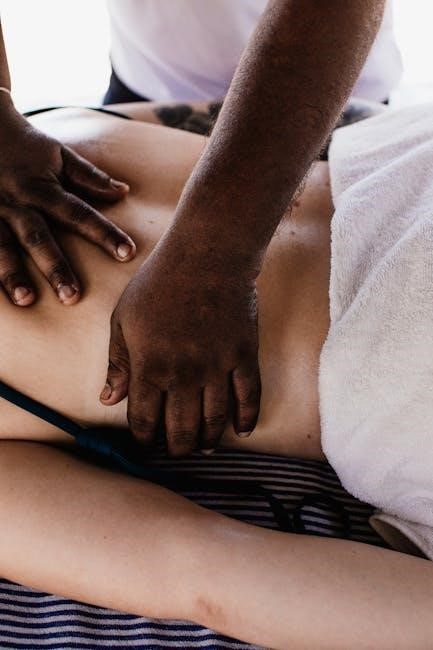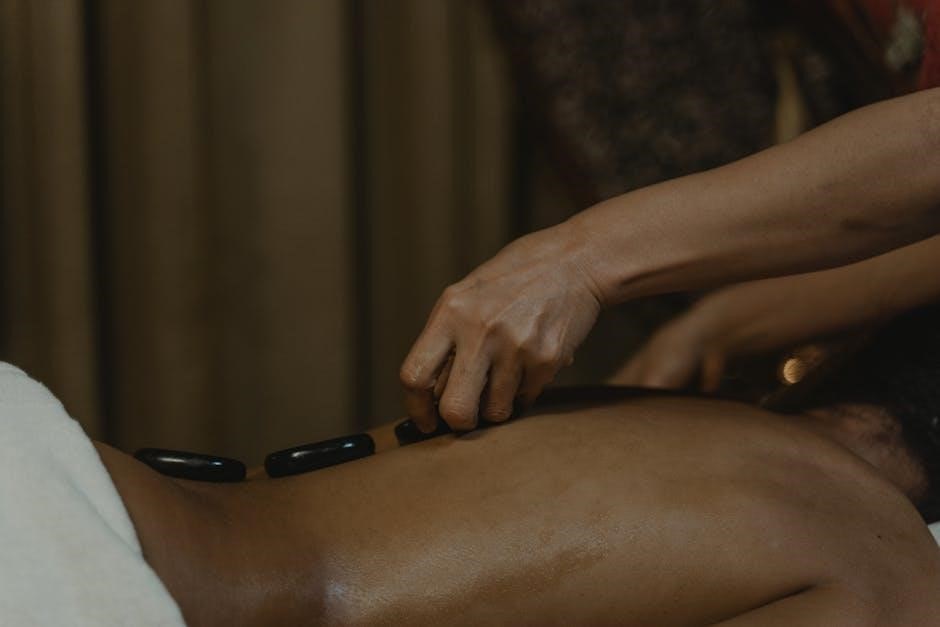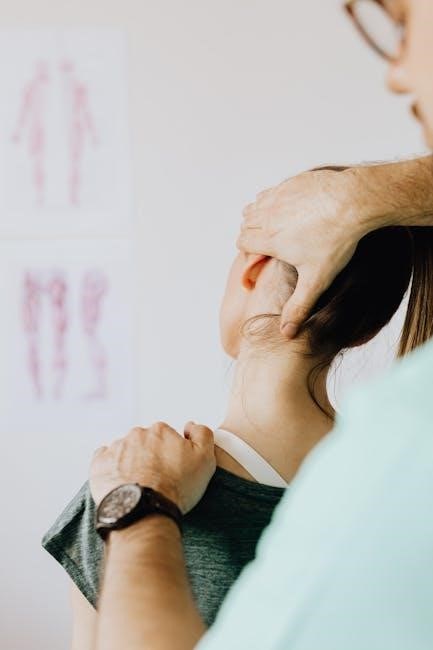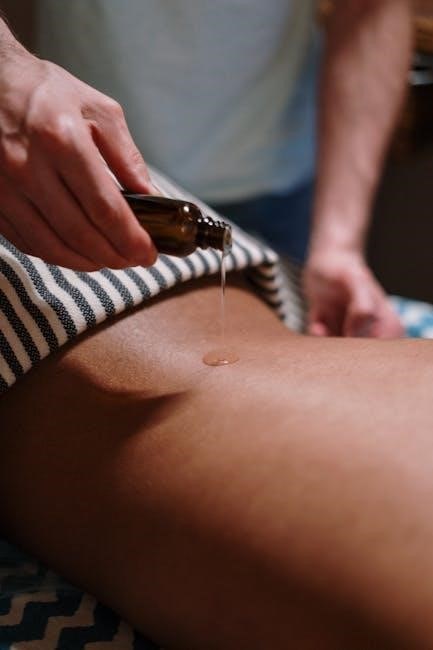back massage techniques pdf
for overall well-being and relaxation through gentle strokes and manipulations of tissues using hands and fingers effectively always.
Definition and Benefits of Back Massage
Back massage is defined as a form of manual therapy that involves manipulating tissues through various techniques such as stroking, kneading, and tapping to promote relaxation and relieve pain. The benefits of back massage are numerous, including reducing muscle tension, improving sleep quality, and enhancing overall well-being. According to research, back massage can also lower blood pressure, reduce symptoms of anxiety and depression, and improve immune function. Additionally, back massage can help to increase flexibility and range of motion, making it an excellent complementary therapy for individuals with chronic pain or limited mobility. By incorporating back massage into one’s self-care routine, individuals can experience significant improvements in both physical and mental health. Furthermore, back massage can be tailored to meet the specific needs of each individual, making it a highly effective and personalized form of therapy. Overall, the benefits of back massage make it an excellent addition to any wellness program.

Preparation and Environment for Back Massage
Preparation involves creating a calm and comfortable environment with a massage table and soothing music always.
General Guidelines for Back Massage
General guidelines for back massage involve understanding the client’s needs and preferences, as well as creating a comfortable and relaxing environment; A massage therapist should always begin by introducing themselves and explaining the massage process. The client should be informed of the benefits and risks associated with back massage, and should be given the opportunity to ask questions and express any concerns. The massage therapist should also ensure that the client is comfortable and relaxed throughout the massage, and should adjust their technique accordingly. This may involve using different massage strokes, such as effleurage or petrissage, or adjusting the pressure to suit the client’s needs. By following these guidelines, a massage therapist can provide a safe and effective back massage that meets the client’s needs and promotes overall well-being. The guidelines also include maintaining a clean and hygienic environment, using proper massage techniques, and respecting client boundaries.

Common Massage Techniques for Back Care
Common massage techniques for back care include various strokes and manipulations using hands and fingers to promote relaxation and relieve pain effectively always.
Effleurage, Petrissage, and Tapotement Techniques
Effleurage, Petrissage, and Tapotement techniques are fundamental components of back massage, utilized to promote relaxation, relieve pain, and improve overall well-being. These methods involve gentle strokes, kneading, and tapping motions, applied to specific areas of the back. The application of these techniques requires a thorough understanding of human anatomy and physiology, as well as the ability to adapt to individual client needs. By incorporating Effleurage, Petrissage, and Tapotement into a back massage routine, practitioners can help to reduce muscle tension, improve circulation, and enhance the overall massage experience. The use of these techniques can be tailored to address specific concerns, such as lower back pain or stress relief, making them an essential part of a comprehensive back massage approach. With proper training and practice, these techniques can be effectively integrated into a back massage routine, providing numerous benefits for clients. Massage therapists can use these techniques to create a personalized and effective treatment plan.

Advanced Therapeutic Back Massage
Advanced therapeutic back massage techniques include myofascial release and trigger point therapy for pain relief and relaxation always using gentle strokes and manipulations effectively.
Myofascial Techniques, Trigger Points, and Lymphatic Drainage
Myofascial techniques are used to treat pain and stiffness in the back by releasing tension in the connective tissue surrounding muscles. This is achieved through gentle strokes and manipulations of the tissue, allowing for increased range of motion and reduced pain. Trigger points are areas of hyperirritable muscle tissue that can cause pain and stiffness, and are often treated with targeted pressure and release techniques. Lymphatic drainage is a gentle, light-touch technique used to stimulate the lymphatic system and promote the removal of toxins and waste products from the body. This can be particularly beneficial for individuals with back pain, as it can help to reduce inflammation and promote healing; By incorporating myofascial techniques, trigger point therapy, and lymphatic drainage into a back massage, therapists can provide a comprehensive and effective treatment for back pain and stiffness, promoting relaxation and overall well-being. Effective use of these techniques requires proper training and practice.

Basic Massage Techniques for Relaxation
Basic techniques include gentle strokes and manipulations to promote relaxation and reduce muscle tension always effectively using hands and fingers.
Learning Basic Massage Techniques
Learning basic massage techniques can be a valuable skill for promoting relaxation and reducing muscle tension in others. Through online resources and instructional guides, individuals can learn various methods and techniques for performing effective massages. The internet provides a wealth of information on back massage techniques, including downloadable PDF files and presentation slides. These resources often include step-by-step instructions and diagrams to help learners understand and master different massage techniques. By studying these materials, individuals can gain a solid foundation in the basics of massage therapy and develop the skills needed to provide relaxing and therapeutic massages. With practice and patience, anyone can learn to perform basic massage techniques and help others achieve a state of deep relaxation and wellness. Online tutorials and videos can also be a helpful supplement to traditional instruction, allowing learners to see and practice techniques in a more interactive and engaging way.
